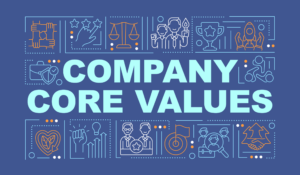Employee engagement Return on Investment(ROI) isn’t just a trend, it’s the backbone of sustainable business success. In today’s competitive market, companies with high engagement levels outperform their peers by a wide margin. While only about 30% of employees are truly engaged at work, those organizations that prioritize engagement see clear, measurable returns — from higher productivity to reduced turnover costs.
Understanding this metric helps you quantify the financial impact of your engagement strategies. Moreover, calculating this ROI provides concrete evidence to secure leadership buy-in for engagement initiatives. When you can demonstrate clear returns, you transform intangible feelings into measurable business outcomes.
The stakes couldn’t be higher. Low worker engagement costs the global economy $8.9 trillion annually, making employee engagement ROI measurement not just beneficial – but essential for organizational survival.
What Is Employee Engagement ROI and Why It Matters
Employee engagement ROI measures the financial returns generated from investing in engagement strategies. Simply put, it answers the question: “How much value do we get for every dollar spent on employee engagement?”
The calculation follows standard return on investment principles. However, this metric encompasses both tangible and intangible benefits that compound over time.
The Financial Impact of Employee Engagement ROI
Recent research reveals staggering employee engagement statistics about ROI:
- Companies with engaged employees experience 23% increase in business profits.
- 56% of leaders confirm engaged workforces deliver positive ROI.
- Engaged employees are 2.5 times more likely to report high productivity.
These numbers translate into real savings. A mid-sized company can potentially save hundreds of thousands annually through improved ROI.
Essential Employee Engagement ROI Calculation Formula
The basic ROI formula follows:
Employee Engagement ROI (%) = [(Benefits – Costs) ÷ Costs] × 100
However, calculating this return requires breaking down both benefits and costs into measurable components.
Core ROI Components
Investment Costs Include:
- Engagement platform subscriptions
- Training program expenses
- Survey and feedback tools
- Recognition program budgets
- Communication technology costs
Measurable Benefits Include:
- Reduced turnover costs
- Decreased absenteeism expenses
- Increased productivity gains
- Improved customer satisfaction scores
- Higher quality output metrics
Step-by-Step Employee Engagement ROI Calculation
Let’s walk through a practical ROI calculation using real-world scenarios.
Example: Medium-Sized Tech Company
Company Profile:
- Employees: 110
- Average Annual Salary: $40,000
- Current Turnover Rate: 13%
- Annual Engagement Investment: $25,000
Step 1: Calculate Turnover Cost Savings
Current annual turnover cost = (110 employees × 13% turnover rate) × ($40,000 × 0.75 replacement cost factor) = 14.3 departing employees × $30,000 = $429,000
With improved engagement (reducing turnover to 8%): Improved turnover cost = (110 × 8%) × $30,000 = $264,000
Annual Turnover Savings: $165,000
Step 2: Calculate Productivity Improvements
Research shows engaged employees are 17% more productive. For our example: Base productivity value = 110 employees × $40,000 = $4,400,000 Productivity improvement = $4,400,000 × 17% = $748,000
Annual Productivity Gain: $748,000
Step 3: Calculate Absenteeism Reduction
Absenteeism costs approximately 1.2% of revenue per employee plus 1.2% of average salary
Assuming company revenue of $8 million: Absenteeism cost per employee = ($8,000,000 ÷ 110 × 1.2%) + ($40,000 × 1.2%) = $873 + $480 = $1,353 per employee
Total annual absenteeism cost = 110 × $1,353 = $148,830 With 25% reduction through engagement = $37,208 savings
Annual Absenteeism Savings: $37,208
Final ROI Calculation
Total Annual Benefits:
- Turnover savings: $165,000
- Productivity gains: $748,000
- Absenteeism savings: $37,208
- Total Benefits: $950,208
Total Investment: $25,000
Employee Engagement ROI = [($950,208 – $25,000) ÷ $25,000] × 100 = 3,701%
This exceptional ROI demonstrates why investment in engagement strategies pays massive dividends.
Advanced Employee Engagement ROI Metrics to Track
Beyond basic calculations, sophisticated ROI measurement includes multiple performance indicators.
Revenue per Employee Metric
Formula: Annual Revenue ÷ Number of Employees
This metric helps track how engagement improvements correlate with revenue generation per team member.
Quality Improvement Tracking
Measure ROI through:
- Reduced error rates
- Fewer customer complaints
- Improved net promoter scores
- Higher customer retention rates
Innovation and Growth Metrics
Engaged employees drive innovation and often become natural employee advocates. Track:
- Number of employee suggestions implemented
- New product ideas generated
- Process improvements created
- Time-to-market reductions
7 Proven Methods to Measure Employee Engagement ROI
1. Employee Satisfaction Surveys
Regular employee surveys and pulse surveys provide quantifiable data about engagement levels. Key metrics include:
- Employee Net Promoter Score (eNPS): Measures likelihood to recommend your company
- Satisfaction ratings: Track improvements over time
- Engagement index scores: Composite measures of multiple factors
Action Tip: Survey quarterly rather than annually for more responsive ROI tracking.
2. Productivity Metrics and Employee Engagement ROI
Track specific productivity indicators:
- Sales performance: Revenue per salesperson
- Output metrics: Units produced per employee
- Efficiency ratios: Tasks completed per hour
- Goal achievement rates: Percentage of objectives met
3. Turnover Reduction and Employee Engagement ROI
Calculate turnover rate by dividing departing employees by average headcount, then multiply by 100.
Monitor both voluntary and involuntary turnover separately for accurate ROI assessment.
4. Absenteeism Impact on Employee Engagement ROI
Track unplanned absences as a percentage of total work days. Disengaged employees cost approximately 18% of their annual salary through various productivity losses.
5. Customer Satisfaction and Employee Engagement ROI
Engaged employees deliver better customer experiences. Monitor:
- Customer Satisfaction Scores (CSAT)
- Net Promoter Scores (NPS)
- Customer Effort Scores (CES)
- Customer retention rates
6. Quality Improvements Through Employee Engagement ROI
Measure quality enhancements:
- Defect rates: Track reductions in errors
- Rework costs: Calculate savings from improved quality
- Customer complaints: Monitor decreasing complaint volumes
- Compliance scores: Track regulatory adherence improvements
7. Financial Performance and Employee Engagement ROI
Ultimate business metrics include:
- Gross profit margins
- Operating profit ratios
- Revenue growth rates
- Market share gains
Common Employee Engagement ROI Measurement Mistakes
Overlooking Intangible Benefits
Many organizations focus solely on hard costs when calculating ROI. However, intangible benefits often provide substantial value:
- Improved company reputation
- Better employer branding
- Enhanced opportunities to promote from within
- Enhanced innovation culture
- Stronger team collaboration
Short-Term Focus
Employee engagement ROI often compounds over time. Organizations expecting immediate returns may underestimate long-term value creation.
Incomplete Cost Accounting
Failing to account for all engagement-related costs skews ROI calculations. Include:
- Technology platform costs
- Training and development expenses
- Management time investment
- Recognition program budgets
Industry Benchmarks for Employee Engagement ROI
Understanding industry standards helps contextualize your ROI performance.
Technology Sector Benchmarks
- Average engagement rate: 35%
- Typical turnover rate: 13%
- Expected ROI range: 300-500%
Healthcare Industry Standards
- Average engagement rate: 28%
- Typical turnover rate: 22%
- Expected ROI range: 200-400%
Manufacturing Benchmarks
- Average engagement rate: 31%
- Typical turnover rate: 15%
- Expected ROI range: 250-450%
Technology Solutions for Employee Engagement ROI Tracking
Modern employee engagement platforms provide automated ROI calculations and real-time tracking capabilities, particularly valuable for managing a distributed workforce across multiple locations.
Essential Platform Features
Look for platforms offering:
- Automated survey deployment
- Real-time analytics dashboards
- Predictive engagement modeling
- Integration with HR systems
- Custom reporting capabilities
Data Integration Requirements
Effective ROI measurement requires integrating data from multiple sources:
- Human resources information systems
- Performance management platforms
- Financial reporting systems
- Customer relationship management tools
Building Your Employee Engagement ROI Business Case
Creating compelling business cases for engagement investments requires strategic presentation of ROI data.
Executive Summary Framework
Structure your business case with:
- Current engagement baseline
- Projected improvement targets
- Investment requirements
- Expected ROI timeline
- Risk mitigation strategies
Supporting Documentation
Include comprehensive supporting materials:
- Industry benchmark comparisons
- Case studies from similar organizations
- Vendor proposals and pricing
- Implementation timeline details
- Success measurement frameworks
Implementation Strategies That Maximize Employee Engagement ROI
Phased Rollout Approach
Implement engagement initiatives gradually to optimize ROI:
Phase 1: Baseline measurement and quick wins.
>Phase 2: Core platform deployment and training.
>Phase 3: Advanced features and customization.
>Phase 4: Continuous improvement and optimization.
Communication Strategy
Transparent communication about engagement initiatives and their expected ROI helps secure employee buy-in and participation.
Manager Training Requirements
Equip managers with skills to:
- Interpret engagement data effectively
- Act on survey feedback promptly
- Recognize and reward engagement behaviors
- Address disengagement proactively
Why HubEngage Delivers Superior Employee Engagement ROI
HubEngage stands out as the optimal choice for organizations serious about maximizing their employee engagement ROI. Our comprehensive platform combines cutting-edge technology with proven engagement strategies to deliver measurable results.
HubEngage’s unique value proposition includes real-time analytics that track your ROI automatically. Furthermore, our integrated approach to communication, recognition, and feedback creates synergistic effects that amplify your investment returns. Companies using HubEngage typically see 40% higher employee engagement ROI compared to standalone solutions.
The platform’s built-in measurement tools eliminate guesswork from ROI calculations. Additionally, HubEngage’s expert support team helps organizations optimize their strategies for maximum return on investment.
Future Trends in Employee Engagement ROI Measurement
Artificial Intelligence Integration
AI-powered platforms will provide:
- Predictive engagement modeling
- Automated intervention recommendations
- Personalized engagement strategies
- Real-time sentiment analysis
HubEngage’s AI Advantage: HubEngage leverages advanced AI algorithms to predict engagement trends and automatically recommend personalized interventions for each employee. Our platform’s machine learning capabilities analyze communication patterns and engagement behaviors to optimize your ROI continuously.
Continuous Feedback Loops
Traditional annual surveys are giving way to:
- Daily pulse checks
- Moment-based feedback collection
- Contextual engagement measurement
- Behavioral analytics integration
HubEngage’s Real-Time Edge: HubEngage’s continuous feedback system enables instant pulse surveys and moment-based feedback collection, ensuring you never miss critical engagement signals. Our platform seamlessly integrates behavioral analytics with communication data to provide comprehensive engagement insights that maximize your ROI.
Advanced Analytics Capabilities
Next-generation platforms will offer:
- Machine learning insights
- Predictive turnover modeling
- Engagement correlation analysis
- ROI optimization algorithms
HubEngage’s Analytics Power: HubEngage’s advanced analytics suite includes predictive turnover modeling and engagement correlation analysis that identify at-risk employees before they leave. Our ROI optimization algorithms continuously analyze your engagement data to recommend strategies that deliver the highest ROI for your specific organization.
Measuring Long-Term Employee Engagement ROI Success
Year-Over-Year Comparisons
Track employee engagement ROI improvements across multiple time periods:
- Quarterly trend analysis
- Annual performance reviews
- Multi-year strategic assessments
- Benchmark evolution tracking
Sustainability Metrics
Ensure engagement initiatives maintain effectiveness:
- Program participation rates
- Manager engagement scores
- Initiative renewal success
- Continuous improvement indicators
Employee Engagement ROI Action Plan
Immediate Steps (Week 1-2)
- Establish baseline measurements
- Identify key stakeholders
- Define success criteria
- Select measurement tools
Short-Term Goals (Month 1-3)
- Deploy initial surveys
- Calculate current costs
- Implement quick wins
- Begin regular tracking
Medium-Term Objectives (Month 3-12)
- Launch comprehensive platform
- Train managers thoroughly
- Optimize based on data
- Calculate quarterly ROI
Long-Term Strategy (Year 1+)
- Establish cultural integration
- Achieve target ROI levels
- Expand successful programs
- Share success stories
Summing Up
Employee engagement ROI measurement isn’t just about numbers – it’s about transforming your organization’s culture and performance. The evidence is clear: companies investing in employee engagement see substantial returns through reduced turnover, increased productivity, and improved customer satisfaction.
The key to success lies in systematic measurement, continuous improvement, and commitment to long-term engagement strategies. With proper ROI tracking, organizations can justify investments, optimize programs, and achieve sustainable competitive advantages.
Start your employee engagement ROI journey today by establishing baseline measurements and setting clear objectives. Remember, every day you delay engagement initiatives costs your organization potential returns.
Ready to calculate your potential employee engagement ROI? The time for action is now.
About HubEngage: HubEngage provides comprehensive employee engagement solutions that deliver measurable ROI for organizations worldwide. Our platform combines advanced analytics, intuitive design, and proven strategies to help companies build thriving, engaged workforces.
Ready to see your potential employee engagement ROI? Contact HubEngage today for a personalized consultation and free ROI calculation.













